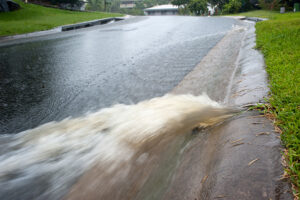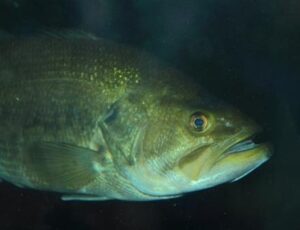Like the contaminants that rush downstream in a polluted river, the repercussions of a repeal of Baltimore County’s state-mandated stormwater remediation fee will flow fast and far, and have a devastating impact on the Chesapeake Bay.
The average person likely gives little thought to what happens to a drop of rain that falls in Baltimore County. We, however, do. We know that stormwater runoff is the #1 cause of polluted water in Baltimore County. That raindrop no one bothers to think about? As soon as it hits a hard surface, it becomes a swift Uber ride to the Bay for contaminants like excess nitrogen, phosphorous, and sediment. Excess levels of nitrogen and phosphorus can lead to algae blooms, and algae blooms can lead to fish kills, like the one just reported in the Baltimore Sun on November 13th.
 As development has increased across the Baltimore County landscape, we have literally paved the way to a degraded Chesapeake Bay. Funds from the County’s stormwater fee are being used to identify and implement ways to handle and treat stormwater that stabilizes local waterways, and interrupts the swift, sidewalk-to-storm drain express route for pollutants to enter the Bay. With funds in place, the County is poised to launch projects that help reverse this degradation. Projects like restoring polluted, unstable streams, and retrofitting outdated, failing stormwater management techniques with “best management practices” that do a better job of retaining and filtering stormwater while also adding wildlife habitat, beauty, and safer access to nature within our urbanized landscape.
As development has increased across the Baltimore County landscape, we have literally paved the way to a degraded Chesapeake Bay. Funds from the County’s stormwater fee are being used to identify and implement ways to handle and treat stormwater that stabilizes local waterways, and interrupts the swift, sidewalk-to-storm drain express route for pollutants to enter the Bay. With funds in place, the County is poised to launch projects that help reverse this degradation. Projects like restoring polluted, unstable streams, and retrofitting outdated, failing stormwater management techniques with “best management practices” that do a better job of retaining and filtering stormwater while also adding wildlife habitat, beauty, and safer access to nature within our urbanized landscape.
If the stormwater fee is repealed, the County will still be required to do this work, but it remains unknown when, how, and with what funds that will happen. How long can we wait?

Largemouth bass (Micropterus salmoides)
If you’re a largemouth bass, one of the species among the 100,000 dead fish in Middle River last week, you’d probably say we can’t wait another minute. If you’re and engineer, construction worker, or biologist employed by a company or agency that does the kind of work funded by the stormwater remediation fee, you’d likely say the same. Even the average non-fishing, non-nature loving Baltimore County homeowner is probably willing to pay $26 a year to help ensure that our waterways are clean.
But what about businesses, the most vocal opponents of the fee? They ought to feel the same way, but when they are misinformed about the purpose of the stormwater fee and swayed by the negative connotations of the word “tax” (used by its critics), we move backwards in terms of keeping our streams and Bay healthy. Meanwhile, the rain continues to fall.
Further Reading
Meet Assistant Construction Project Team Leader Bryan SullivanMeet Conservation Biologist Nolan Schillerstrom
Get to know Allyson Gibson, Biohabitats Extern
Get to Know Graphic Designer Joey Marshall
Evolution: A New Leadership Team for Biohabitats
More From This Author
Learning from Hurricane SandyThoughts on Biomimicry
On The Construction Side Of Restoration Ecology With Matt Koozer
Religion & Environmental Stewardship
Get to know Sarah Emrich, Water Resources Engineer

